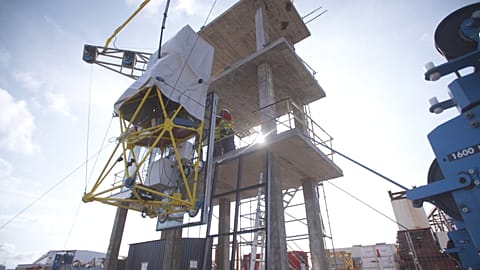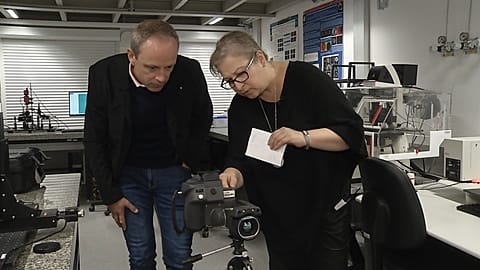Grouping vehicles in efficient "trains" has long been suggested as a cure for congestion, but with electric vehicles now becoming more common, EU scientists have tackled a host of technological challenges to make them possible, and improve air quality, too.
Roadtrains have often been mooted as an efficient way of regulating traffic, but with little success. Now a roadtrain of electric vehicles may help improve the transport systems inside city centers. European scientists think they are on the right track to provide the answers, and they invited "Futuris" to share their solutions.
A pioneering European research project sees the concept as a tool for improving carsharing within city centers and suburban areas.
Their vision is that commuters can take vehicles to and from their nearest public transport point without using their cars.
The coupling system is thought to make the spatial distribution of vehicles more efficient, helping to match supply and demand.
"A service operator can bring the vehicles to wherever they are needed. By driving just one vehicle, you can tow up to seven to where commuters need them," says CEA/Esprit project co-ordinator Valéry Cervantes.
The coupling principle is similar to that of trains. The main challenge was finding ways to prevent lateral oscillations. The system links vehicles electro-mechanically, increasing the stability of the convoys and the efficiency of energy transmission from a single charging station.
"The new feature of this coupling system is that signals, i.e. control commands, can be transmitted between the vehicles and charge balancing can take place between the vehicles," says Automotive Engineer at Hormann, Markus Heniich..
Parts of the steering, propulsion and braking equipment inside the vehicles were laboratory-tested. The tests, scientists say, provided the proof that the road train can work safely in forward and reverse gear.
"Every vehicle has two motors; one at the front and one at the rear. That means that when we are towing eight vehicles, we have 16 motors to pilot. So we had to develop very complex command and managment systems. For the first we had to first develop different algorithms taking into account several parameters, including the mass of the vehicles. Then we bench-tested the whole platform and finally on the vehicles themselves on the road," says CEA Electrical Architect Julien Dauchy.
Computer scientists were required to develop models to predict future fleet distribution, demand and revenue. Parameters like distances, population, commuter habits, travel & waiting times or the cost of vehicle redistribution had to be closely taken into account.
"Huge investmests are necessary to build the charging infrastructure. So we need to define the right strategy to allow us to decide where to install these charging stations and how big they should be," says CNR-PISA Computer Scientist Raffaele Bruno.
Batteries have a range of some 50 kms. An average journey time is expected to be no more than 10 minutes.
"It is a system designed to complement the public transportation network, where people hesitate to take public transportation, because they live, or they work, too far away from it. So our aim is simply to offer commuters a new tool to allow them take public transportation instead of their cars, so pollution, traffic jams and CO2 emissions can be cut," says Cervantes.
Each vehicle can run to up to 65 kms/hour, according to its developers. The project includes test trials in three pilot sites in France, Spain and the United Kingdom.


















